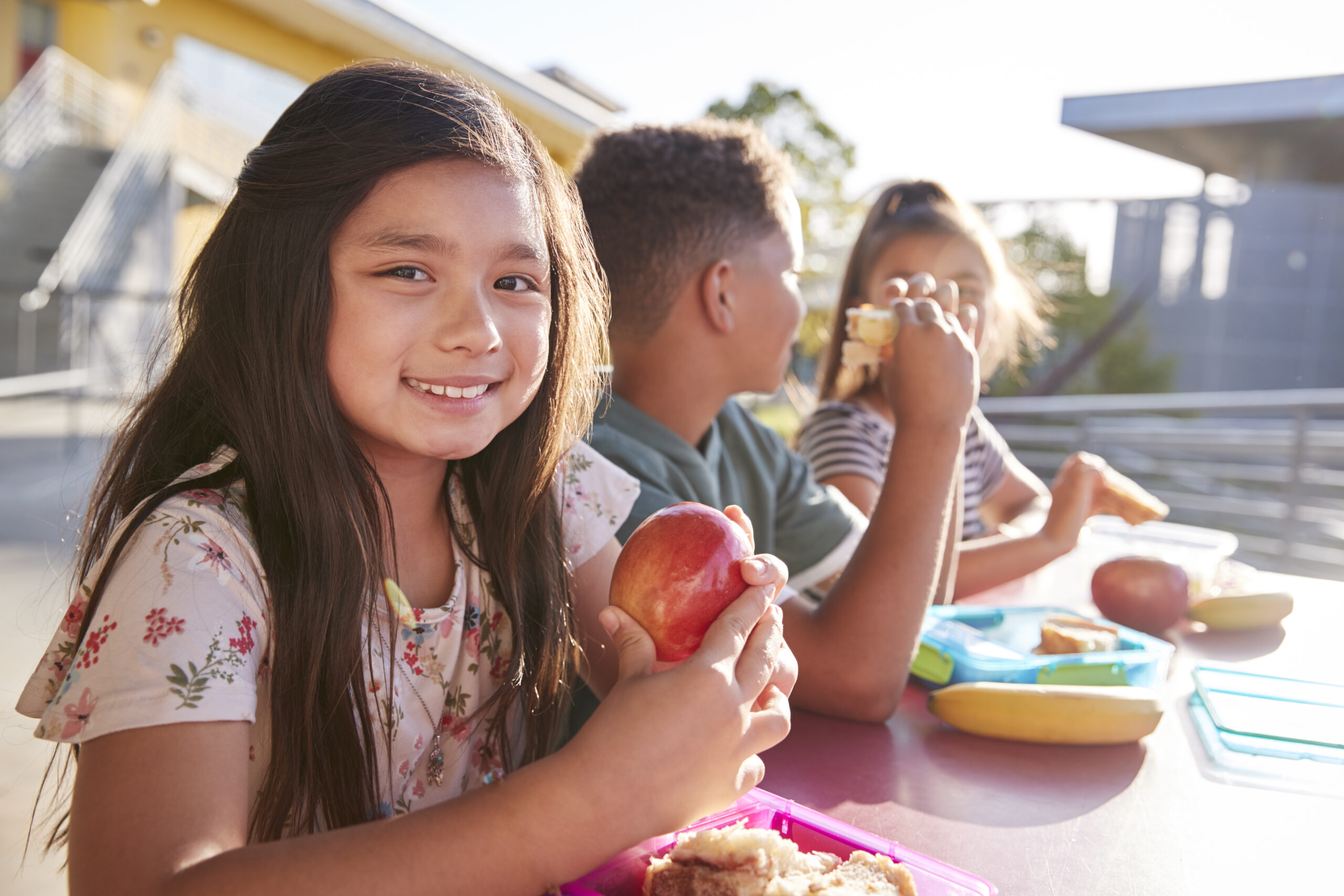Summer is upon us here in the U.S. and so is the heat. So it seemed like an appropriate time to turn our attention to that heat-relieving, thirst-quenching, all-essential substance we call water.
Often overlooked as the “plain Jane” drinking choice, water is a critical element of life that keeps our bodies functioning throughout the day. And as the obesity epidemic has ballooned in recent years, more and more public health entities are working to remind us that water can be a perfect alternative to the sugar-sweetened beverages that we often tend to reach for when we’re thirsty.
Schools can play a big part in supporting water as a healthy drinking alternative. Making sure students have access to safe, free drinking water throughout the school day helps to create an environment that supports health and learning without the ups and downs that sugary beverages often lead to.
The Healthy, Hunger-Free Kids Act of 2010 and the Smart Snacks in Schools nutrition standards actually require schools to make free water available to students as part of the federally subsidized school meal programs.
But making water available is one thing. How do we raise awareness about the benefits of water and make it cool enough for young people to drink when faced with a myriad of sweeter choices.
A few efforts are underway to do just that and so we thought we’d revisit a few of those during these summer months to highlight some helpful resources that parents, community leaders and educators may want to make use of.
Drink Up
 In 2013, First Lady Michelle Obama and the Partnership for a Healthier America launched an effort to encourage everyone to drink more water. Joining with several other organizations and brands, the campaign aims to place the Drink Up logo millions of packs of bottled water, reusable bottles and outdoor public water taps. The logo is also being used in various efforts to encourage people to drink more water by lifting up its importance in social media, public events and other mainstream media channels.
In 2013, First Lady Michelle Obama and the Partnership for a Healthier America launched an effort to encourage everyone to drink more water. Joining with several other organizations and brands, the campaign aims to place the Drink Up logo millions of packs of bottled water, reusable bottles and outdoor public water taps. The logo is also being used in various efforts to encourage people to drink more water by lifting up its importance in social media, public events and other mainstream media channels.
You can follow the conversation on twitter using the hashtag #spreadthewater or the campaign’s handle @URH2O. Visit www.youarewhatyoudrink.org to learn more.
Rethink Your Drink
Rethink Your Drink is a public health initiative led by the California Department of Public Health. The campaign aims to shift consumption toward healthier, more affordable beverages, like water for all people.
 Visit the California Department of Public Health’s website for loads of resources that can be helpful to you in promoting this messaging in your school and community. In true public health fashion, CDPH has allowed many public health organizations to run with “Rethink Your Drink” campaigns of their own. You’ll find a myriad of additional resources and messaging out there on the web. Tune into #rethinkyourdrink on twitter to see the conversation.
Visit the California Department of Public Health’s website for loads of resources that can be helpful to you in promoting this messaging in your school and community. In true public health fashion, CDPH has allowed many public health organizations to run with “Rethink Your Drink” campaigns of their own. You’ll find a myriad of additional resources and messaging out there on the web. Tune into #rethinkyourdrink on twitter to see the conversation.
Here’s a great video that Kaiser Permanente produced in partnership with the Santa Clara Department of Public Health that drives the Rethink Your Drink message home in a way that elementary age kids can connect with. You can find a collection of these animated pubic service messages on the same page.
And for the youngest among us, check out Potter the Otter: A Tale About Water. This animated site and accompanying book is great to instill the importance of drinking water for kids under 5.
Be Smarter, Drink Water
 Here’s a smart campaign that shows what can be accomplished when a bunch of public health entities come together as a coalition to support water consumption in their community.
Here’s a smart campaign that shows what can be accomplished when a bunch of public health entities come together as a coalition to support water consumption in their community.
The City of Richmond, Contra Costa Health Services and the Building Blocks for Kids Collaborative joined together to highlight the benefits of drinking tap water in the region while also working to increase access to free drinking water and promote other healthy eating/drinking messaging within the Iron Triangle Area of Richmond, Calif. The City of Richmond’s website has some great content on messaging in support of water, illustrating that if it can be done here, it can be done in any community.
Additional resources
Visit the Center for Disease Control and Prevention’s Water Access in Schools page for even more great messaging, along with a toolkit for promoting water access and consumption in schools.



